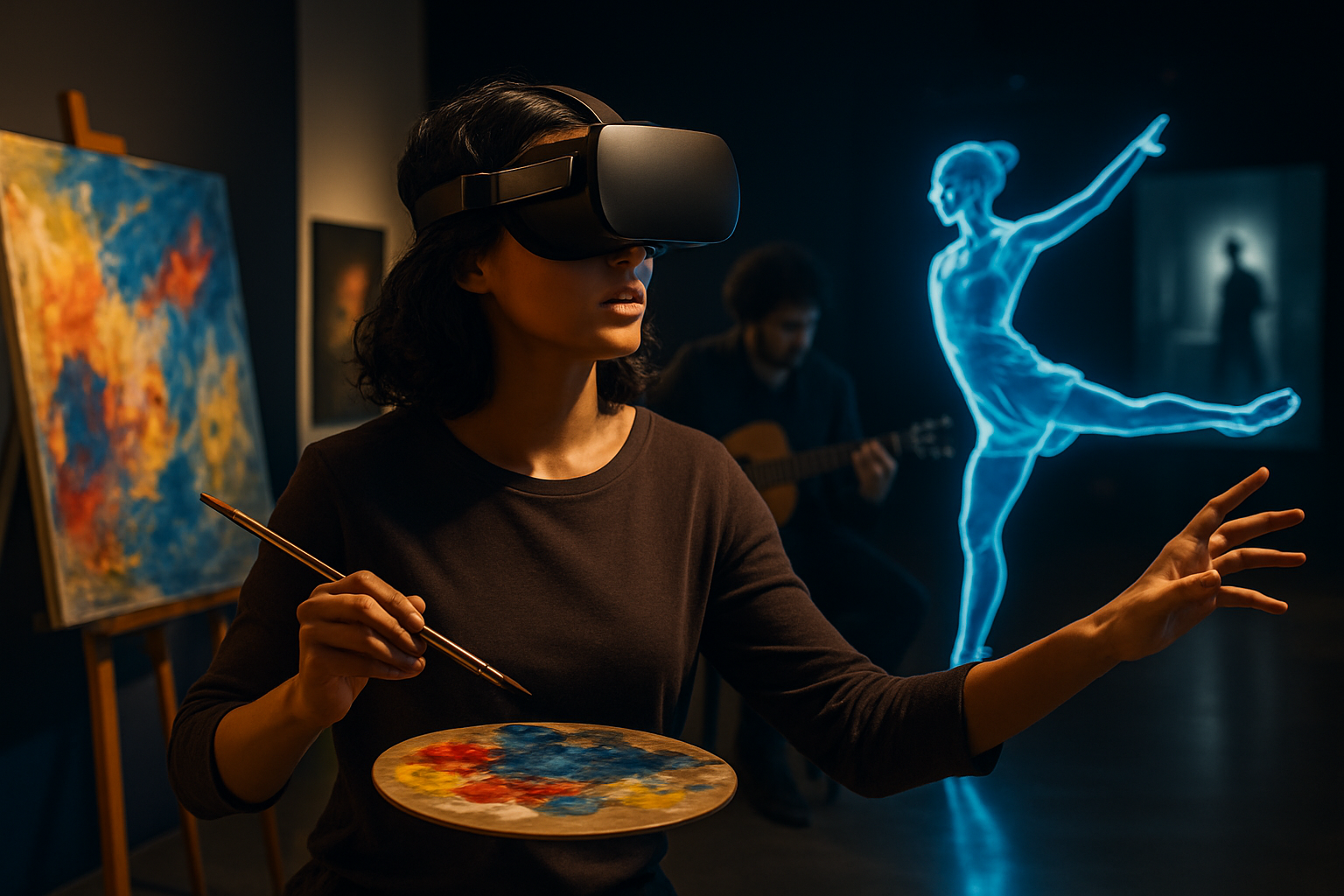Digital Art Disruption: AI's Canvas Takeover
In the ever-evolving landscape of artistic expression, a seismic shift is underway. The digital art realm, once dominated by human creators wielding styluses and graphics tablets, now faces an unprecedented challenger: artificial intelligence. This technological revolution is not merely augmenting artistic processes; it's fundamentally redefining the very essence of creativity. As AI-generated artworks flood online galleries and social media feeds, the art world grapples with questions of authenticity, authorship, and the future of human expression in an increasingly automated creative sphere.

Controversy in the Art Community
As AI-generated pieces gain recognition and even fetch high prices at auctions, the traditional art community finds itself divided. Some hail this as a revolutionary new medium, while others decry it as a threat to human artistry. Critics argue that AI art lacks the emotional depth and intentionality of human-created works, while proponents suggest that AI is simply a new tool in the artist’s arsenal, akin to the introduction of photography or digital design software.
The Democratisation of Creativity
One of the most significant impacts of AI art has been its democratising effect on creativity. With user-friendly interfaces and accessible platforms, individuals with no formal artistic training can now produce stunning visual works. This has led to an explosion of amateur artists and a redefinition of what it means to be a creator in the digital age. However, this accessibility also raises concerns about the devaluation of artistic skill and the potential flooding of the market with AI-generated content.
Legal and Ethical Quandaries
The rise of AI art has spawned a host of legal and ethical dilemmas. Questions of copyright and ownership become murky when an algorithm creates a piece based on a dataset of existing artworks. Moreover, the potential for AI to replicate or closely mimic the styles of living artists raises issues of intellectual property and artistic integrity. The art world now grapples with how to attribute, value, and protect works created by non-human entities.
The Future Canvas: Human-AI Collaboration
Despite the controversies, many artists and technologists see a future where human creativity and AI capabilities merge to create entirely new forms of artistic expression. Collaborative projects between human artists and AI systems are already yielding fascinating results, pushing the boundaries of what’s possible in visual art. This symbiosis could lead to a renaissance in digital art, where human imagination is amplified by the computational power and pattern recognition abilities of AI.
Redefining Artistic Value
As AI art becomes more prevalent, the criteria for evaluating and appreciating art may need to evolve. Traditional notions of skill, technique, and emotional resonance are being challenged by works that are the product of algorithms rather than human hands. This shift is prompting a reevaluation of what we value in art and why, potentially leading to new frameworks for artistic criticism and appreciation in the digital age.
The Gallery of Tomorrow
Museums and galleries are beginning to grapple with how to curate and display AI-generated art alongside traditional works. Some institutions have embraced this new form, hosting exhibitions dedicated to AI art and exploring its implications for the future of creativity. Others remain hesitant, questioning whether machine-generated pieces deserve the same cultural status as human-created masterpieces. This tension is likely to shape the landscape of art exhibitions and collections for years to come.
In conclusion, the AI art revolution is more than just a technological advancement; it’s a paradigm shift that challenges our fundamental understanding of creativity, authorship, and artistic value. As we stand at the crossroads of human and machine artistry, the canvas of the future remains blank, waiting to be filled with the collaborative brushstrokes of human imagination and artificial intelligence. The ultimate masterpiece may well be the harmonious integration of these two forces, creating a new artistic language that speaks to the complexities of our digital age.




